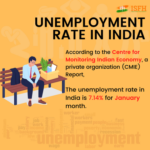Poverty eradication is the foundation for economic growth, and it is the biggest challenge for our nation. Nearly 1.4 billion lives in India and the average income of the poor is below 140 rupees per day on average, and if we don’t take action now, nothing will happen in the future. Education for the poor is a high-hanging soar grape for the underprivileged since decades onwards. As we are familiar, education reduces poverty and can bring revolutionary changes to our education system. Everyone in the country should have equal and quality education to reduce poverty and related challenges. Enabling quality education helps millions of poor to overcome poverty. Education reduces poverty if we have a clear vision and mission on identifying the poor and tackling illiteracy.
3 Ways to End Poverty with the Power of Education
Number#1
The official stats say that 171 million people worldwide have overcome extreme poverty within ten years by equipping them with basic reading skills. The same report states that if every child is allowed to read and write, we can reduce poverty by 15%. If these were the world stats, then think about our nation; we can achieve more than these milestones. Improving the literacy skills of children in early childhood helps the communication, literature, and language skills. Education for the poor is the best way to break the poverty cycle.
Number#2
Gender difference is one of the biggest challenges for education in India. Though we overcome the difference up to some extent, underprivileged girl children are least considered while providing quality education in India. Developing countries have the provision to care for girl child education with their policies. As a developing country like India, we need to add a bit more effort to gender equality in education. According to the stats, the educated female earns 10% – 20% more than uneducated by having primary education and 25% more after completing her secondary education. Mostly, 80% of the mothers’ wages are spent on the household; hence girl child education is highly essential to overcome poverty. At ISFH Foundation, we provide quality education to both genders, i.e., Males and Females, to promote quality education.
Number#3
Utilize Climate Changes
By 2030 there can be more chances of natural disasters due to climate changes, as per the UNESCO reports, which may drag 122 million people to poverty. Educating the poor helps future farmers understand the changes in the climate and cultivate the land and thus eventually leads to the end of poverty. Introducing ecological and climate changes in education should be mandatory for child education in India. These skills will help the students utilize the resources creatively and instill changes in their behavior to beget a better future.
Education is the topmost priority for the nation and needs to be implemented from the grassroots as education increases the economy, development, and productivity by
simultaneously increasing the individual income. Quality education alone can eradicate poverty in poor homes. Let’s help some needy children to receive quality education and be a part of the ISFH Foundation’s Right to Education Movement by joining as a member.








